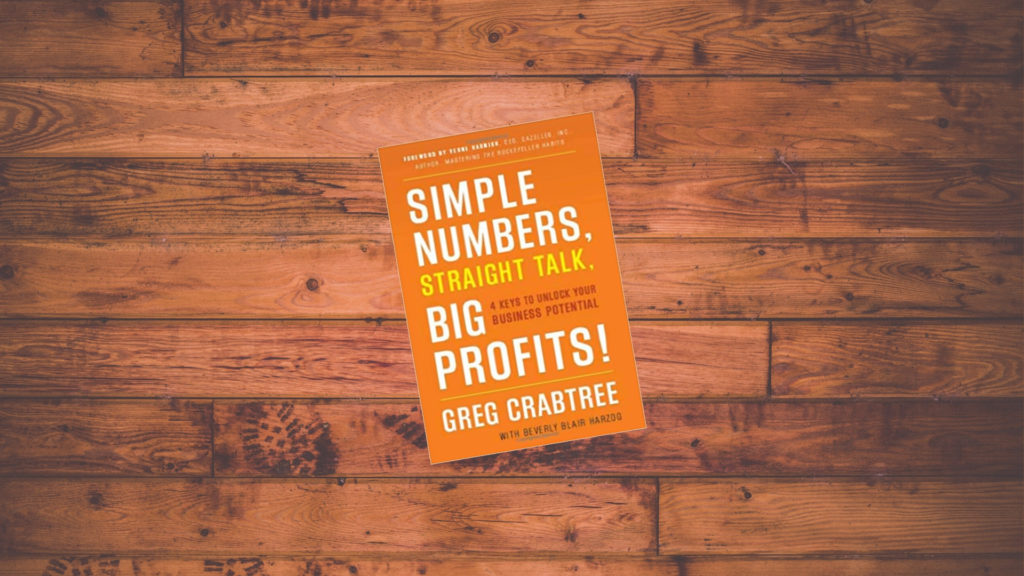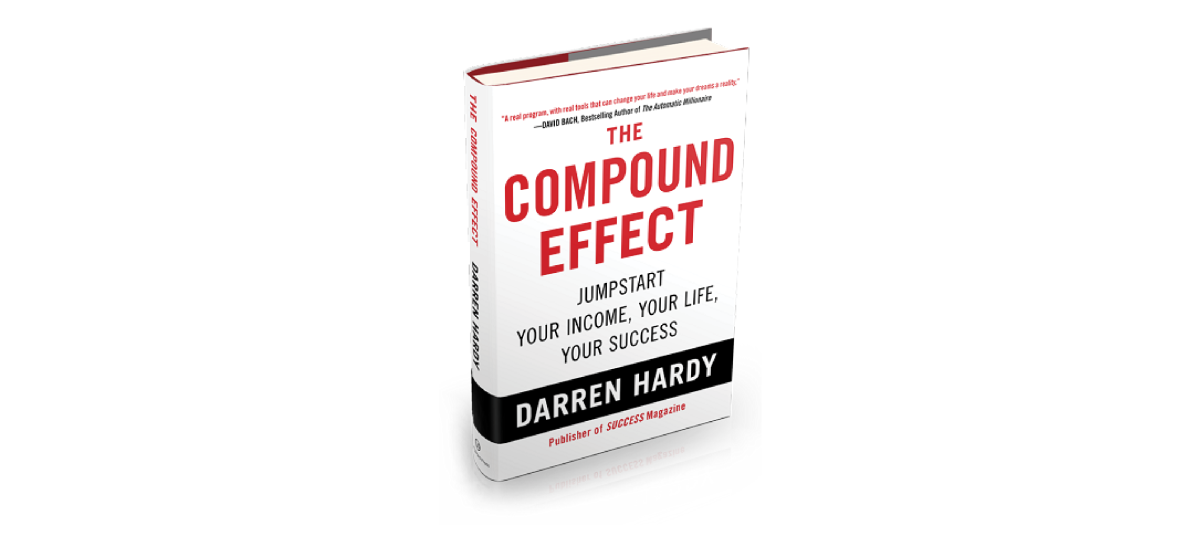I’ve read several accounting books, but most of them were dry and focused on examples of public companies. “Simple Numbers, Straight Talk, Big Profits!” is the first book that dives into the nitty-gritty and offers strategic insights for running a business with less than $10 million in revenue.
A few years ago, I co-founded a coworking space, but I didn’t involve myself much in the financial aspects. Looking back, I realize that was a mistake. I wanted to understand the financial side of the business better, so I picked up this book to learn what to expect from accountants and identify the core KPIs for running a profitable, bootstrapped business.
The author, Greg Crabtree, is a CPA who specializes in helping entrepreneurs take control of their financial data. Below, I’ve outlined my key takeaways from the book. I highly recommend purchasing it and giving it a read.
The book is divided into two sections. Section 1 covers four essential topics: Owner Salary, Profit, Labor Productivity, and the Four Forces of Cash Flow. While section 2 builds upon the former and dives deep. I’ve highlighted my notes from section 1 below.
On Owners Salary
Remember this key distinction: You get paid a salary for what you do, and you get a return on what you own.
If you’re not able to pay yourself a market-based wage so you can see the true metrics of your business, you’re operating at a loss. You can’t let this phase go on too long because you will eventually face two bad scenarios: a below-market wage and no return on your investment.
It’s important to understand that if you are underpaying yourself, your business is sick.
You shouldn’t pay yourself a market-based salary when your business can’t afford it, calculate sweat equity instead.
Value profitability over tax savings. Stop distorting your net income because of improper owner compensation.
Pay back your investors before you share profits, and create reasonable financial expectations for your investors.
Management by committee is an absolute failure as a business model. There has to be a clear leader even if the stock ownership is equal.
Determining A Market-Based Wage:
If you got run over by a bus today and your heirs decided they would keep the business going in your absence, what would they have to pay someone to do your job?
Your tax bill is your #1 key performance indicator. The higher your tax bill, the better your business is doing. Don’t spend profits to lower your tax bill.
Profit: Why 10% Is The New Breakeven
Profit is the lifeblood of every business. If your business isn’t profitable, you’re taking business from others and you will eventually fade away. You either have to be profitable or have an endless amount of capital to throw at your business.
If you can’t pay yourself a market-based wage, the first thing to focus on is getting your business profitable.
Pretax profit is your earnings before taxes. That is the revenue-generating activity that your business produces for your benefit. In most of the businesses I work with, interest, depreciation, and amortization are real numbers, so it’s important to understand that you should ignore EBITDA and focus on your pretax profit.
Gross profit is revenue less cost of goods sold. Contrary to many other accountants, I recommend that you not include any labor costs in getting to gross profit. By keeping labor out of the equation, my definition of gross profit gets you to the number that is the true economic engine of the business.
Gross profit minus your direct labor is then what I refer to as your contribution margin before you pay for your general operating expenses.


When it comes to pretax profit, here’s what I’ve found to be true for the vast majority of businesses:
- 5 percent or less of pretax profit means your business is on life support.
- 10 percent of pretax profit means you have a good business.
- 15 percent or more of pretax profit means you have a great business.
If you’re above 15 percent, you better take it while you can because the market will eventually change. The best businesses tend to operate between 10 percent and 15 percent.
Your number one key performance indicator is how big a check you write to the IRS.
As a business grows from $1 million to $5 million in revenue, it will pass through the black hole. To survive, the business owner must have adequate resources to hire additional staff to take responsibility for key functional areas.
To get through the black hole, you will need a capital safety net. Prepare a cash flow forecast by month for the time period of the expansion to determine your capital needs.
Make a plan to live off your market-based wage and leave every dime of profit in your business as you grow from $1 million to $5 million in revenue.
Labour Productivity
Focus on your gross profit per labor dollar as your key indicator for labor productivity.
Significant component of cost creep is labor creep, which is the biggest profit sucker out there.
A key talent is to know what tasks to reassign to new hires and what tasks to assign to your current employees.
We have seen that you need to maximize your labor productivity to increase your gross profit, so don’t hire an employee for a function that you can do.
To maximize your productivity of labor, avoid labor creep, and don’t hire an employee for a function that you can do. Consider what functions you can outsource, and refine your management team.
Calculate and maintain your salary cap (including your own market-based wage).
Determining your salary cap is the best way to achieve your required labor productivity.
If you sell goods, your non-salary costs include the cost of goods sold for the products you sell.

If you are exceeding your salary cap, decide what to do about it. Are you going to hold wages constant until you hit your profit target, are you going to cut staff, or are you going to do some of both?
Get to 15 percent pretax profit before you raise your salary cap and drive your profit back down to 10 percent.
The higher your pretax profit, the quicker you reach a cash-positive state. Control your profit by getting the most productivity out of every labor dollar you spend.
The Four Forces of Cashflow
The four forces of cash flow are as follows, in this order:
- Paying your taxes
- Repaying debt
- Reaching your core capital target (building working capital)
- Taking profit distributions
Your core capital target is simply this: two months of operating expenses in cash and nothing drawn on a line of credit.
In many cases businesses are fully capitalized in twelve to eighteen months, and the owners can start paying themselves a market-based wage. Knowing a tentative date will give you the courage to hang on until that day comes. When it’s some unknown date in the future, people are tempted to live off the business prematurely.
A savvy buyer will know if your numbers are lying. Don’t compromise your ability to sell your business by making questionable distributions or paying personal bills with company funds.
If you want to be debt free, you need to know how far below zero your operating cash flow is at its worst. In almost every case where I monitor this, the worst downstroke is roughly the two months of operating expenses.
In most cases, this is my philosophy: Don’t pay taxes until you absolutely have to without incurring a penalty. Until you pay the taxes, you have to set the money aside and get it out of your financial calculations so you know it isn’t yours to spend.
People who take a low- to no-debt approach can handle bad economic news because they live more stable and productive lives.
There are two types of debt: lines of credit and term debt. For entrepreneurs, credit lines are the equivalent of crack cocaine—it’s that addictive.
I want you to pay the least amount of tax allowable under the rules, but I don’t want you to distort your rates from one year to the next.
You shouldn’t be in a 5 percent bracket one year and a 40 percent bracket the next year.
If you borrow money, you have to forgo any after-tax profits because you have to repay debt with those profits. If you have no taxable profits, you can’t repay the debt.
When you take on debt, you’re forcing yourself to be profitable in the future or else you’ll default. To avoid default, you might end up having to sell the business.
You need to have access to a line of credit because some things are outside of your control, but you know the situation is temporary. You should rely on debt only in extraordinary circumstances.
Do not confuse debt with capital. Capital is the cash you leave in the business to fund your receivables and inventory for normal business conditions, and debt is financing for special cases. Once you start financing normal receivables with debt, you are lowering the odds of your business being able to survive a downturn.
Capital formation is the sum of sweat equity, money you invest, and after-tax profits that you keep in the business.
Consistent profits over time allow you to build equity by keeping those profits in the business, which then allows you to hit your core capital target, which then allows you to have excess cash that you can take out without damaging your business’s ability to grow or deal with struggles. This ties back to the basic philosophy that if you pay yourself a market-based wage, then you can live off that salary. Then you can leave the aftertax profits in the business until it is healthy and you reach your core capital target. After that, you can start to take distributions that are beyond the tax expenses.
Take distributions on a formal basis each quarter only after you have covered your taxes and hit your core capital target.


